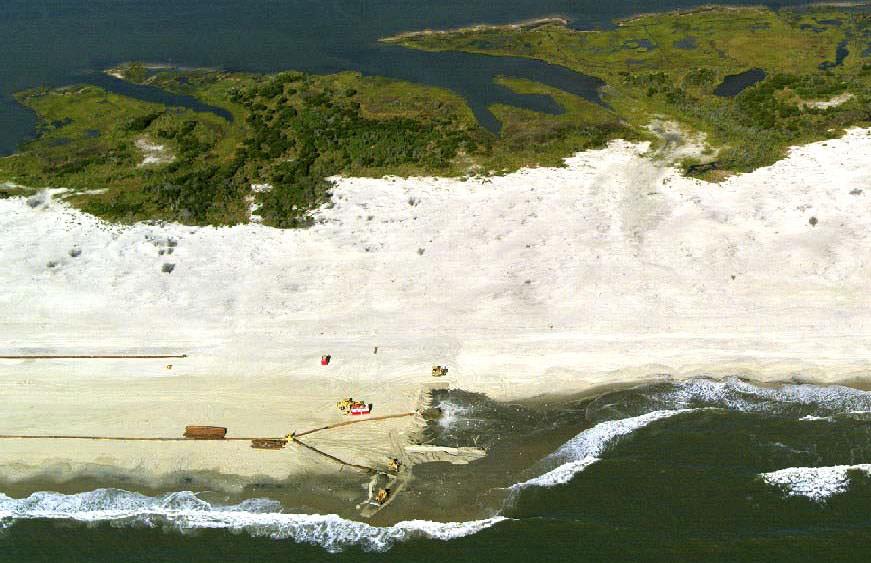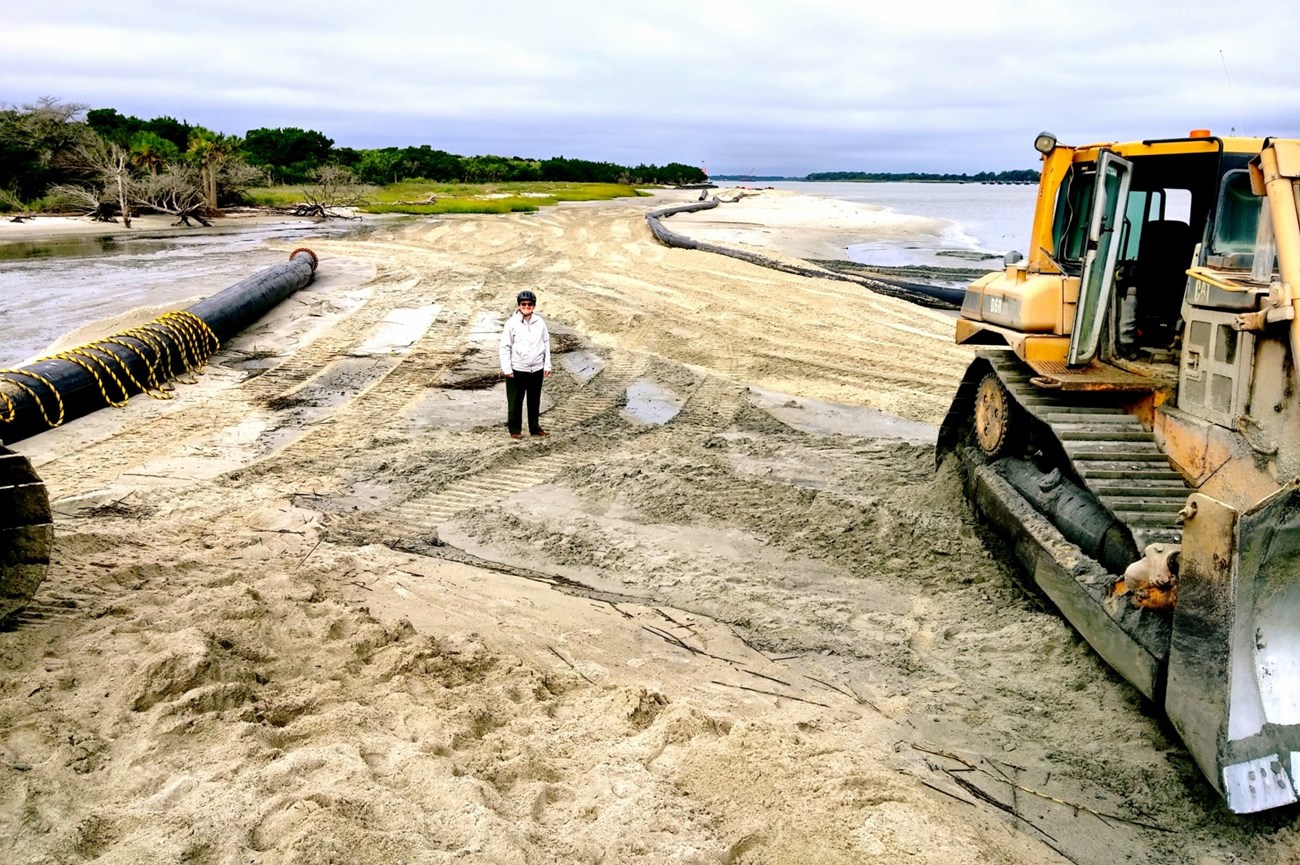Part of a series of articles titled Coastal Engineering—Soft Structures.
Next: Dredging
Article

NPS photo.
Beach nourishment is the process of placing additional sediment on a beach or in the nearshore. A wider and higher beach can provide storm protection for coastal structures, create new habitat, and enhance the beach for recreation. Sediment is commonly dredged offshore and pumped directly onto the beach or dumped nearshore by a hopper dredge, or occasionally sourced from an inland location. Some replenishment projects aim to protect property by building berms or filling gaps in the dunes to absorb wave energy. Often, beach nourishment is needed to replenish sediment to counteract the erosional effects of hard-structure stabilization on nearby coastlines. For example a system of jetties was constructed in the 1930’s to stabilize the Ocean City Inlet located along the barrier island at the north of what was to become Assateague Island National Seashore. The hard structures altered natural sediment transportation processes and left downdrift beaches to suffer sand deficits and increased erosion rates. As a result, the coastline shifted hundreds of meters and undertook large scale geomorphic change, impacting sensitive habitat and reducing storm protection of the mainland. Millions of cubic yards of sediment has since been dumped both onshore and nearshore in attempt to restore the islands ‘natural’ conditions.

NPS photo.
Although beach nourishment may provide protection or restore previous habitat, it can also have significant negative impacts on natural processes. Dumping sediment in large quantities can suffocate benthic communities which are the food source for many species of seabirds and fishes. Often, beach nourishment projects demand a continuous re-supply of sediment due to the erosional nature of the involved beach. Nourishment entails the removal of sediment from “borrow sites”, typically dredged offshore. Changes to borrow sites may alter sediment transport, hydrodynamic patterns, marine ecosystems, and create erosional “hot spots” on adjacent shorelines if not chosen correctly.
Subaqueous nourishment may be substituted on account of cost limitations or biotic complications resulting from direct beach nourishment. Subaqueous nourishment is an alternative form of replenishment where the creation of offshore berms (mounds) provides a source of sediment that, over time, migrates landward and fosters gradual accretion on adjacent beaches. Similarly, sediment bypassing is a technique where dredged material is dumped directly downdrift from an armored inlet being dredged. The material is transported by the current and deposited on the sediment deprived downdrift side of the inlet.
Part of a series of articles titled Coastal Engineering—Soft Structures.
Next: Dredging
Last updated: April 8, 2019